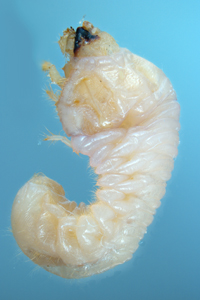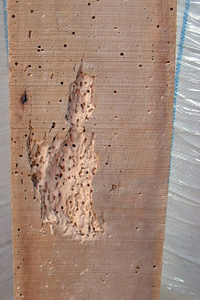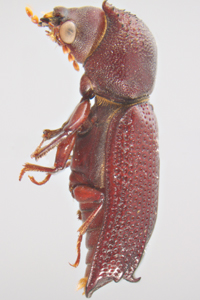Download
| Document | Pages | File size |
|---|---|---|
Lesser auger beetle fact sheet PDF  |
2 | 1.83 MB |
If you have difficulty accessing this file, please visit web accessibility.
Online version
The lesser auger beetle is found in India, Asia, the Middle East and South Africa.



Note: images are not to size
The risk to Australia
The lesser auger beetle poses a biosecurity risk because it feeds on various hardwood timbers and bamboo that have a high sapwood and starch content. The damage is primarily caused by larvae tunnelling in the wood, which can reduce the quality of the timber. The beetle has caused damage to furniture and other wooden structures overseas, but this is generally due to the use of poor quality timber with high sapwood content. In Australia, the beetle is considered to be a lower risk due to Australia’s building standards, but could potentially infest furniture and timber flooring. Lesser auger beetle does not attack living plants and is not known to cause significant environmental impacts.
What the lesser auger beetle looks like
Adult beetles range from 6 to13 millimetres in length and are between 2 to 3.5 millimetres wide. Their bodies are moderately shiny and their colour ranges from a reddish brown to a brownish black. Males have two incurved hook-like projections at the back end of their bodies.
Eggs are laid on rough surfaces of sawn timber and logs, in holes, cracks or short tunnels made by the female. The larvae are white to yellowish in colour, curved in shape and up to 15 millimetres long. The larval boring holes are about 6 millimetres wide and can wind for several centimetres.
What to look for
The lesser auger beetle is likely to enter Australia in imported timber, dunnage (for example crates, pallets and other packaging), furniture and souvenirs. Look out for circular exit holes and fine floury frass in hardwood timber.
SEE. SECURE. REPORT.
If you see this pest or any other pest that you think may have hitchhiked to Australia, contain it where possible and immediately report it to the Department of Agriculture Fisheries and Forestry on 1800 798 636.
For safety, consult a departmental entomologist before handling specimens.
